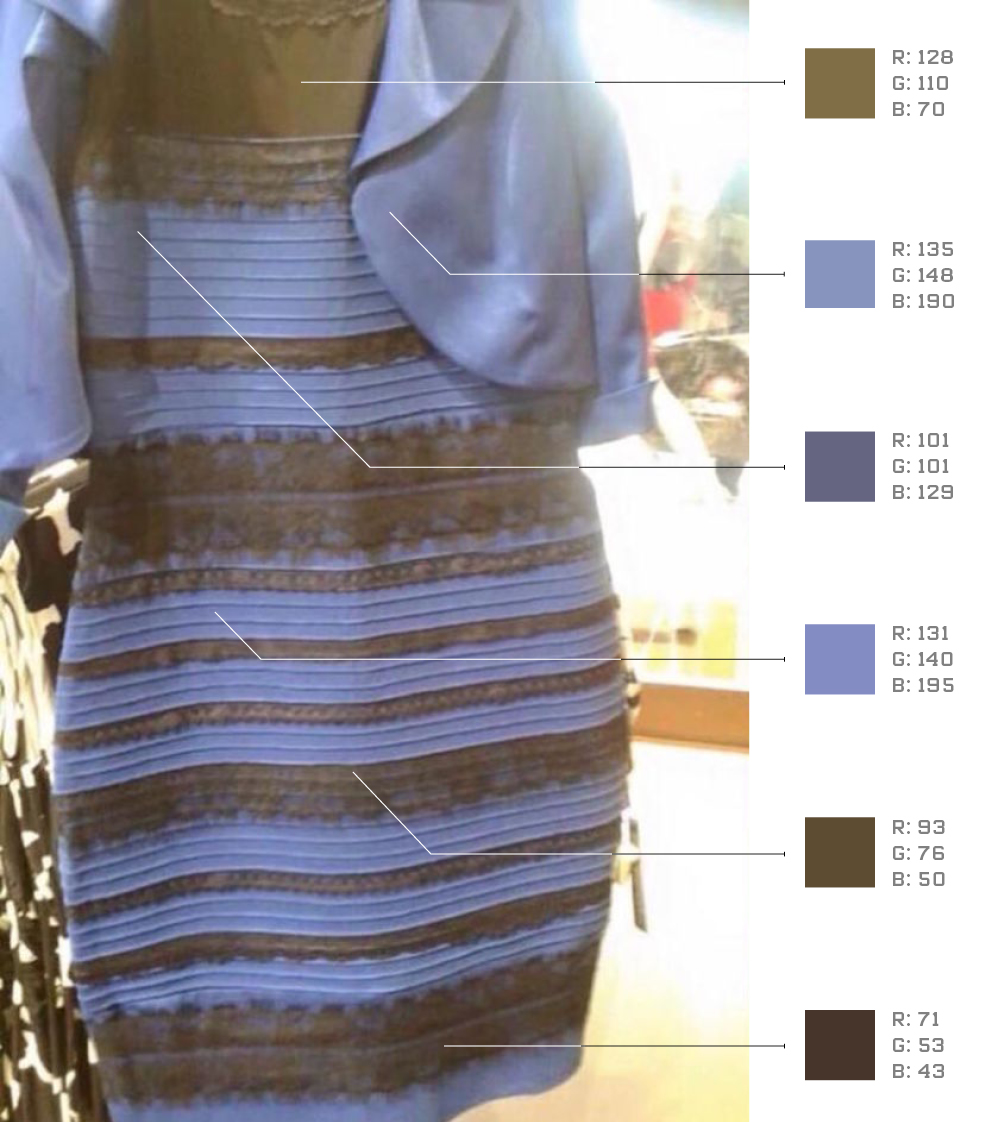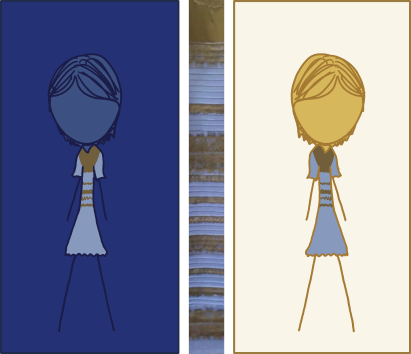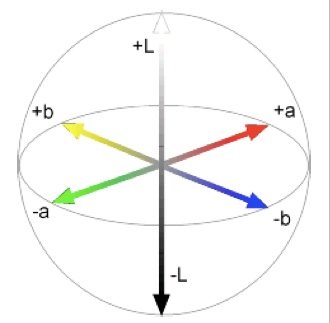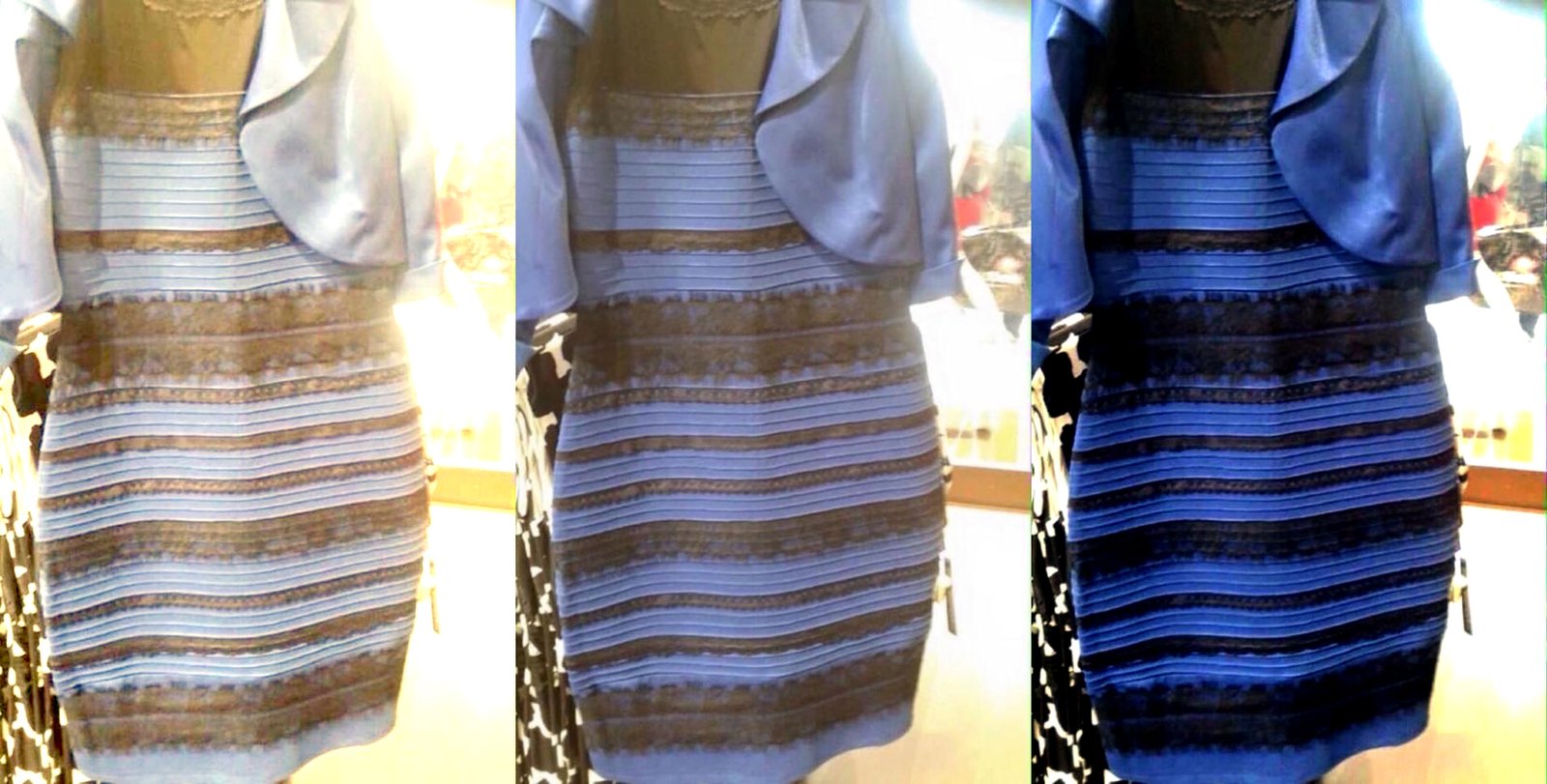The Neuroscience of #TheDress

Color perception is as relative as human perception in general, and it is easy to understand this statement if we use price as an example. The dress in question costs 77 dollars. This is expensive or cheap? It Depends. It is nothing to a Hollywood actress, but expensive for a beggar anywhere in the world.
What the price has to do with the color? Just as expensive and cheap depends on the bank account of each owner, the color of the dress also depends on how each person’s brain works. In the case of #TheDress, people are divided into two main categories, #whiteandgold or #blackandblue. The color of the original dress is black and blue, but what matters is the photo that generated a different dress (pictured above) and observers are divided between #whiteandgold or #blackandblue. Who is right? Everyone.
What is this for? Perceptual constancy brings some stability to our lives already so troubled. In the specific case of color, constancy is a mechanism that is constantly discounting changes in lighting so that the color of objects remains stable. Without the color constancy, we would perceive objects changing color almost all the time because the light emitted by objects – in fact – changes according to the change in lighting, whether natural or artificial. In other words, we see differences where they exist and therefore “we do not see the world as it is, but how it can be useful to us” as stated Beau Lotto.
Some brains assume that the lighting is yellowish, discounting the yellow and perceiving a #blackandblue dress while others assume that the lighting is blueish, discounting the blue and perceiving a #whiteandgold dress. The simulation below is the one that best illustrates the difference between those who discounts blue lighting (left) and those who discounts the yellow lighting (right).

If the brain’s task was deciding between a green or blue lighting, #TheDress would never gone viral. Blue and green colors are not opponents and the differences would have passed unnoticed. Discounting blue creates a perception predominantly yellow and discounting green creates a perception predominantly red. Yellow and red are two different colors but between them there is a wide variety of yellowish-red, orangish-red, and many other similar descriptions that we are used to and it would never cause a huge controversy.
The same cannot be said in the case of blue and yellow. They are opponents in the human color space and the perceptual result differs completely. Discounting blue creates a perception predominantly yellow and then people perceive #whiteandgold while discounting yellow creates a perception predominantly blue and people perceive #blackandblue. Between blue and yellow there is no intermediary color because there are no blueish-yellow or yellowish-blue and, therefore, either we name it yellow or gold or any other name that does not contain any blue or we name blue or any other name that does not contains anything about yellow – the reason for the stark difference.

What makes a person see #whiteandgold and another person see #blackandblue? In my research, 50% perceive #whiteandgold and 50% perceive #blackandblue. If this result is confirmed, the choice between seeing one or another may be merely the result of chance orchestrating our brains as getting heads or tails is also a matter of randomness. If my sample is not confirmed, the answer live somewhere else and Drummond was right because “each chose as his whimsy, his illusion, his myopia.” In this case, further research could help us understand what differs those who perceive #whiteandgold and those who perceive #blackandblue. One way or another, everyone is right because our minds were designed to see a bit but not much and it varies from brain to brain.
Color is often thought of as a quality of the object or light, but this is not true. The color is a mental phenomenon determined by neuronal processes and the light is just the beginning of this process that ends with the perception of one or more colors. Experiencing blue or gold or any other color is a mental construction.
Claudia Feitosa-Santana is a neuroscientist with Masters in Experimental Psychology and PhD in Neuroscience and Behavior from the University of Sao Paulo, and a Postdoctoral in Integrative Neuroscience from The University of Chicago. She lives in Chicago where she is an Adjunct Professor at The School of The Art Institute of Chicago and at the Roosevelt University.


One Reply to “The Neuroscience of #TheDress”
It’s funny that I thought of you when I saw this. Perception that is a very powerful concept. I miss you.